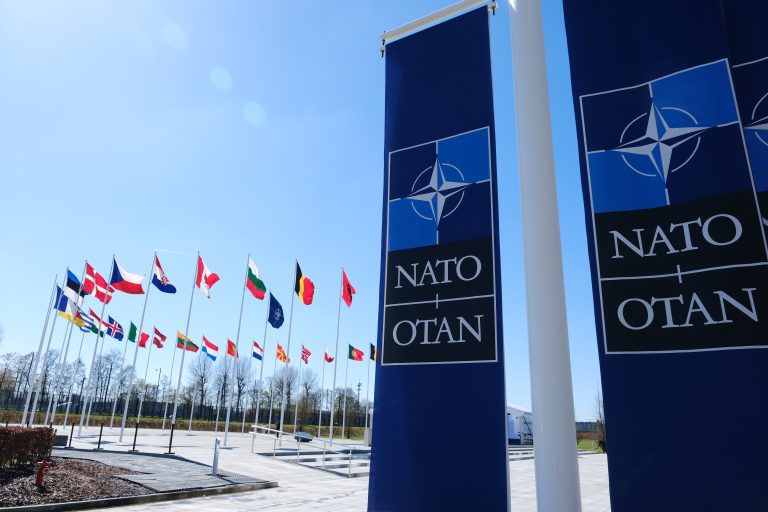Serbia’s Protests and the Risks of a Standoff
Written by Elisa Garbil – 15.09.2025
In the late summer of 2025, Serbia finds itself at a pivotal juncture. Tens of thousands of demonstrators continue to flood Belgrade’s streets, joined increasingly by smaller towns across the country. At the heart of the mobilisation lies a deep frustration with entrenched corruption, economic insecurity, and the tightening grip of populist rule. The protests, largely youth-driven but backed by wider segments of the population, have emerged as the most serious challenge to the government in years. Yet as the crowds swell and international attention sharpens, the risks facing Serbia multiply across the political, social, and economic spectrum. Listen to Saša Dobrijević‘s episode.
1. Political Risk: The Battle Over Legitimacy
At the core of Serbia’s turmoil is a battle over legitimacy. Protesters argue that corruption has hollowed out public institutions, undermined electoral fairness, and entrenched a system where political power is used to shield elites rather than serve the citizenry. The demand for snap elections reflects not just a call for accountability but also a rejection of a political order seen as unresponsive to public needs. The government, however, portrays the protests as illegitimate and dangerous, framing them as violent street movements that threaten national stability.
This clash of narratives creates significant risks. If the government refuses concessions, its refusal could deepen perceptions of authoritarianism, sparking even larger protests and potentially radicalising sections of the movement. Conversely, if snap elections are conceded, there is no guarantee that the contest would be genuinely free, given the history of media control, intimidation, and patronage networks. Either outcome risks delegitimisation: one through resistance to democratic demands, the other through manipulated electoral processes.
The government’s counter-strategy has so far combined rhetoric and populist concessions. By raising pensions and public sector salaries, leaders attempt to defuse dissent with material benefits. Yet this approach risks being perceived as cynical: an attempt to buy loyalty rather than reform governance. Such measures may temporarily appease some groups but leave the underlying crisis of trust unresolved.

2. Social Risk: Polarisation and Mobilisation
The protests are remarkable not only for their size but also for their composition. Students have played a leading role, spearheading a campaign that portrays itself as moral and generational. Their anger is rooted in the perception that corruption not only robs them of economic prospects but also of dignity and a fair future. As they march in silence or stand in vigil, the symbolism underscores their rejection of violence and their demand for integrity.
Yet the social risks of prolonged mobilisation are stark. The longer the standoff endures, the more likely it is that polarisation deepens between protesters and government supporters. Already, the government’s narrative frames demonstrators as destabilisers, while protesters see the ruling elite as irredeemably corrupt. This binary framing risks hardening into social fracture, where dialogue becomes impossible and compromise politically toxic.
The memory of the Belgrade stampede in March 2025, where dozens died during a vigil, adds a layer of trauma that magnifies the stakes. While the tragedy initially unified grief across divides, its politicisation has since fueled resentment. If future protests encounter violent repression or further accidents, Serbia could see social unrest spiral into more dangerous forms of conflict.
3. Economic Risk: Populism Meets Fiscal Reality
Serbia’s economic model has long depended on promises of stability and gradual growth, but the protests expose vulnerabilities. The government’s strategy of raising pensions and wages in response to discontent underscores the limits of populist economics. While such measures may temporarily increase purchasing power, they risk straining public finances, especially in a country with modest reserves and high exposure to external economic pressures.
Investor confidence is another critical risk. Mass protests, especially when covered widely by international media, cast doubt on Serbia’s stability. Foreign investors may hesitate to commit to long-term projects, wary of political upheaval. This hesitation could have a cascading effect: reduced investment undermines growth, which in turn exacerbates the economic grievances fueling the protests. Moreover, inflationary pressures are a looming danger. Increased government spending to pacify unrest could contribute to price rises, eroding the very benefits that wage and pension increases were meant to deliver. In this cycle, populist concessions risk backfiring, deepening discontent rather than alleviating it.

4. International Risk: Serbia and the EU’s Dilemma
The protests place Serbia’s relationship with the European Union under new scrutiny. For years, EU officials have balanced pragmatic engagement with concerns over democratic backsliding. Now, with demonstrators explicitly framing their struggle as one for democracy, the EU faces pressure to respond more forcefully. Failure to do so risks discrediting the EU’s normative power in the Balkans, where its promise of integration has long been a stabilising anchor.
Yet the EU’s options are fraught with risk. Strong intervention could be portrayed by the Serbian government as external meddling, bolstering nationalist narratives and justifying further crackdowns. Weak or muted responses, on the other hand, risk alienating the Serbian public, especially younger generations who view Brussels as a potential ally in their struggle for reform. In this sense, the EU is caught in a dilemma: act, and risk destabilising relations; stay quiet, and risk irrelevance.
Meanwhile, geopolitical competition adds further complexity. Russia and China maintain influence in Serbia, often positioning themselves as alternatives to Western models. Should protests intensify and the EU falter, Belgrade may pivot more decisively toward these powers, altering regional alignments in ways that extend risks beyond Serbia’s borders.
5. Security Risk: From Protests to Unrest
Thus far, the majority of demonstrations have remained peaceful, but the risk of escalation cannot be ignored. Nightly clashes, as witnessed earlier in the summer months of July and August, illustrate the thin line between nonviolent mobilisation and violent confrontation. Police crackdowns, the infiltration of extremist groups, or accidental tragedies could transform Serbia’s protest movement into broader unrest.
The memory of the Yugoslav wars and the fragility of Balkan stability remain an implicit backdrop. While Serbia today is not on the brink of ethnic conflict, prolonged internal unrest could weaken state capacity, embolden radical actors, and destabilise neighboring states. For a region where historical grievances remain potent, Serbia’s turmoil is not just a national risk but a regional one.
6. Long-Term Risk: The Generational Reckoning
Perhaps the deepest risk facing Serbia is generational. The protests are driven by young people who see themselves as the inheritors of a failed system. For them, corruption is not merely an economic inconvenience but a structural theft of opportunity and fairness. If their demands are met only with repression or cosmetic concessions, the outcome could be a lasting alienation of Serbia’s youth from its institutions. This alienation carries profound long-term consequences. It risks accelerating brain drain, as young Serbs seek futures abroad rather than at home. It risks embedding cynicism about politics, weakening democratic culture for decades. And it risks leaving Serbia perpetually vulnerable to cycles of populism, protest, and repression, with little space for genuine reform.

The Risks of Decisions
Several scenarios emerge from Serbia’s ongoing standoff:
- Controlled Concession: The government concedes to snap elections but manages them in ways that preserve ruling-party dominance. Protests subside temporarily, but disillusionment grows as voters perceive manipulation.
- Escalation and Crackdown: Protests continue to grow, clashes intensify, and the government resorts to harsher repression. This risks international condemnation, EU disengagement, and long-term instability.
- Populist Appeasement: Material concessions keep unrest at bay for a time, but fiscal strain and inflation undermine these measures, reigniting protests under worse economic conditions.
- Breakthrough Reform: Under internal and external pressure, the government allows genuine reforms and freer elections. This scenario stabilises Serbia but requires political will unlikely under current leadership.
Serbia at a Crossroads
Serbia’s protest movement represents more than a passing wave of dissent. It is a struggle over the country’s future direction: whether governance will remain entrenched in populist, corruption-laden practices or whether a new generation can force accountability and reform. The risks are multiple and intertwined: political legitimacy, social cohesion, economic stability, international alignment, and long-term generational trust.
Each pathway forward carries its own hazards. The government’s reliance on populist tactics may buy time but not legitimacy. Protesters’ resilience keeps hope alive but also risks collision with entrenched power. International actors face dilemmas with no easy resolution. In this crucible, Serbia’s trajectory will be shaped not only by the choices of leaders and protesters but by the broader capacity of its society to navigate risk without descending into fracture.
The silent marches, the vigils, the chants for justice, all of these are not merely the sounds of protest but signals of a society confronting its most fundamental questions. For Serbia, the coming months are not only about politics but about risk: the risk of losing trust, of losing stability, and, ultimately, of losing the possibility of democratic renewal. Additionally, it is also showing European countries what will wait for them would we let populism win…






One Comment
Comments are closed.